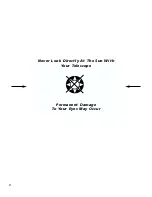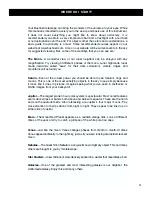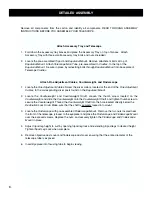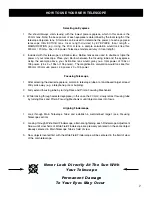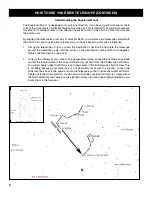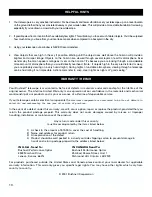
Understanding the Equatorial Mount
The Equatorial Mount is designed to move in any direction. It can be set to allow manual controls
to track the movements of celestial bodies across the sky. This is referred to as diurnal movement:
movement of celestial bodies in the direction opposite to that of the earth’s rotation and around
the earth’s axis.
By aligning the telescope’s polar axis at celestial North, you will place the telescope parallel with
the earth’s axis and thus be able to locate stars in the sky based on star atlas information.
1. Set up the telescope at night. Loosen the Declination Lock Knob and rotate the telescope
around the declination axis until the arrow on the declination scale points to 90 degrees.
Tighten the Declination Lock Knob.
2. Look up the latitude of your area in any geographical atlas. Loosen the Latitude Lock Knob
and set the latitude scale to the correct latitude for your area. Aim the Finderscope at Polaris.
You will probably notice that Polaris is not dead center in the Finderscope’s field of view. This
is probably because your telescope is not absolutely level with the ground. Loosen the
Horizontal Axis Lock Knob again and turn the telescope so that it is directly aimed at Polaris.
Tighten both the Horizontal Axis Lock Knob and Latitude Lock Knob. Polaris is 1 degree from
the North celestial pole. Therefore, the sighting of stars will have to be slightly adjusted as you
locate them in the heavens.
8.
HOW TO USE YOUR NEW TELESCOPE (CONTINUED)
POLAR
AXIS
LATITUDE
N
N
S
S
EARTH’S AXIS
(CELESTIAL AXIS)
POLAR AXIS & EARTH’S AXIS


